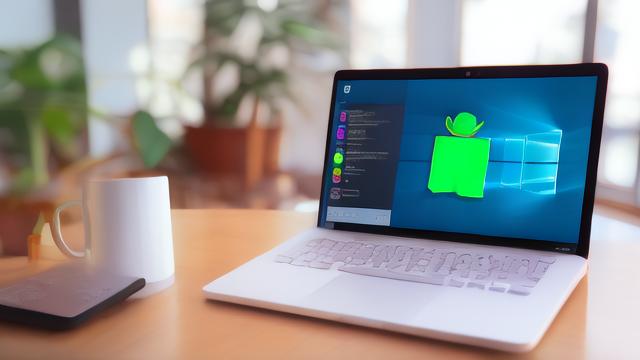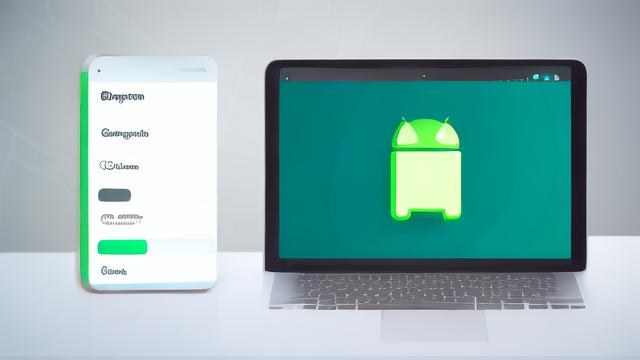Android客户端与服务器交互在模拟器能够得到服务器的响应

一、背景描述
在Android开发过程中,经常需要在模拟器上测试应用程序的各种功能,包括与本地服务器的交互,很多开发者在尝试连接本地服务器localhost时遇到了问题,本文将详细解释Android模拟器如何连接本地服务器localhost,解决在模拟环境中访问本地服务的问题,为开发者提供实用的操作步骤和建议。
二、Android模拟器与服务器交互的原理
Android模拟器是运行在电脑上的虚拟移动设备,用于模拟真实手机的行为,当Android应用在模拟器中运行时,它实际上是运行在一个虚拟机环境中,而不是直接运行在手机上,模拟器中的网络环境与真机有所不同,需要特别注意网络配置。
三、模拟器访问本地服务器的方法
使用特殊IP地址
10.0.2.2:这是Android模拟器用来访问宿主机的特殊地址,通过这个IP地址,模拟器可以访问到本地计算机上的服务器。
10.0.3.2:这是Genymotion模拟器用来访问宿主机的特殊地址,如果使用的是Genymotion模拟器,则需要使用这个IP地址。
确保服务器正在运行

确保本地服务器已经正确配置并正在运行,如果服务器运行在端口8080上,那么在模拟器中可以通过“http://10.0.2.2:8080/”来访问它。
检查网络设置
确保模拟器与本地计算机在同一网络中,并且没有防火墙或其他网络设置阻止通信。
如果使用的是公司网络或公共网络,可能需要联系网络管理员以确保相关端口已开放。
使用HTTP协议进行通信
HTTP通信采用“请求—响应”方式,即在请求时建立连接通道,当客户端向服务器端发送请求时,服务器端才能向客户端发送数据,这种方式适用于不需要时刻保持连接在线的场景,如客户端资源的获取、文件上传等。
四、示例代码
以下是一个简单的示例,展示了如何在Android客户端中使用Socket与服务器进行通信:
服务器端代码(Java)
import java.io.*;
import java.net.*;
public class Server {
public static final String SERVERIP = "192.168.1.100"; // 替换为实际IP地址
public static final int SERVERPORT = 51706;
public void run() {
try (ServerSocket serverSocket = new ServerSocket(SERVERPORT)) {
System.out.println("S: Connecting...");
while (true) {
try (Socket client = serverSocket.accept();
BufferedReader in = new BufferedReader(new InputStreamReader(client.getInputStream()));
PrintWriter out = new PrintWriter(new BufferedWriter(new OutputStreamWriter(client.getOutputStream())), true)) {
System.out.println("S: Receiving...");
String str = in.readLine();
if (str != null) {
out.println("You sent to server message is:" + str);
// 保存信息到文件(可选)
File file = new File("C://android.txt");
try (FileOutputStream fops = new FileOutputStream(file)) {
byte[] b = str.getBytes();
for (int i = 0; i < b.length; i++) {
fops.write(b[i]);
}
}
System.out.println("S: Received: '" + str + "'");
} else {
System.out.println("Not receiver anything from client!");
}
} catch (Exception e) {
System.out.println("S: Error 1");
e.printStackTrace();
} finally {
System.out.println("S: Done.");
}
}
} catch (Exception e) {
System.out.println("S: Error 2");
e.printStackTrace();
}
}
public static void main(String[] args) {
Thread desktopServerThread = new Thread(new Server());
desktopServerThread.start();
}
}客户端代码(Android)
import android.app.Activity;
import android.os.Bundle;
import android.util.Log;
import android.view.View;
import android.widget.Button;
import android.widget.EditText;
import android.widget.TextView;
import java.io.*;
import java.net.*;
public class Socket_Android extends Activity {
private static final String TAG = "Socket_Android";
private EditText mEditText = null;
private TextView tx1 = null;
private Button button = null;
protected void onCreate(Bundle savedInstanceState) {
super.onCreate(savedInstanceState);
setContentView(R.layout.activity_main);
mEditText = (EditText) findViewById(R.id.editText1);
button = (Button) findViewById(R.id.button1);
tx1 = (TextView) findViewById(R.id.textView2);
button.setOnClickListener(new View.OnClickListener() {
public void onClick(View v) {
init();
}
});
}
private void init() {
boolean flag = false; // 成功与否的标记
String user1 = mEditText.getText().toString().trim();
try {
Socket socket = new Socket("192.168.1.100", 51706); // 替换为实际IP地址和端口号
PrintWriter out = new PrintWriter(new BufferedWriter(new OutputStreamWriter(socket.getOutputStream())), true);
BufferedReader in = new BufferedReader(new InputStreamReader(socket.getInputStream()));
out.println(user1);
String str = in.readLine();
Log.d(TAG, "Response from server: " + str);
tx1.setText(str);
} catch (UnknownHostException e) {
e.printStackTrace();
} catch (IOException e) {
e.printStackTrace();
}
}
}五、归纳

通过了解Android模拟器与本地服务器localhost的连接方式,并使用特殊的IP地址10.0.2.2,您应该能够轻松地在模拟器中访问本地服务器,这将为您的Android开发工作带来极大的便利,如果在遵循以上建议后仍然无法解决问题,可能需要进一步检查您的网络配置或寻求专业的技术支持。
以上就是关于“android客户端与服务器交互在模拟器能够得到服务器的响应”的问题,朋友们可以点击主页了解更多内容,希望可以够帮助大家!